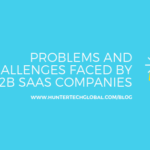What are the pros and cons of Java Microservices and How businesses can take advantage of Java microservices and Cloud Microservices?
In the ever-growing globe of software engineering buzzwords, “Microservices” is a reasonably modern addition. Introduced around 2012, it has rapidly gained in prominence. But what are microservices and what are the pros and cons of adopting Java microservices? Here we go with them
What are Microservices?
Microservice architecture in Java, or simply microservices, is a unique method of creating software systems which strive to concentrate on developing single-subroutine modules with well-characterized interfaces and procedures. The trend has grown fashionable in recent years as Businesses look to become more flexible and move towards a DevOps and uninterrupted testing.
Microservice Architecture
Microservices are a standardization approach. Utilizing microservices means to compile an application out of autonomous services flowing in various processes. Therefore microservices can be autonomously implemented. Within a service, you can use any innovation and facilities. The services traditionally uncover their capability via a REST API and exchange HTTP messages to communicate. Perversely, in a monolithic, all elements drive in the same process and facilities ( generally an application server), are badly sporadic and communicate with each other through in-process methods calls. In this blog, let’s look at the benefits and drawbacks of microservices for enterprises.
Pros and Cons of Java microservices
Pros
Independent
An advantage to a microservices architecture in Java is that each service is created and implemented autonomously from all the other services. This means an upgrade to any one element does not need the entire app to come down in order to implement that upgrade, only the component in wonder. This permits for reinforced productivity and safer implementation processes.
Targeted
As the services are created autonomously, a cloud microservices architecture makes it simpler for various portions of an app to be deployed using various nomenclatures. This is advantageous when a specific nomenclature is better suited or tailored at a given chore.
Flexible
Since all interaction bumps over the network rather within the same in-memory procedure, there is more tractability in terms of how each criterion is unruffled. This also makes it simpler for teams that have various skill sets to lend to a project without spending time learning a fresh nomenclature or functioning outside of their areas of knowledge.
Robust
Apps utilizing data microservices architecture are more strong as a whole. When there is an unbound pairing between services, if any service flunks, there’s a higher chance the app as a whole can proceed to offer value to the users. The hardiness hinges on the nature of the services, how they communicate and whether the app is structured with fault-permissiveness
Cons
Refactoring
Certainly, if the different behaviors of your app are well comprehended and simply separated, Aws microservices architecture can offer some additional advantages. But suppose a project has been deployed in this style but the appropriate kinship between constituents was initially mistreated? Refactoring an app across various services is much tougher than compiling a monolith and any interface shifts will require to be unified between all the affected teams. Suddenly, using various nomenclature for divergent elements does not look like such a benefit when capability from one service has to be recompiled over to another.
Complexity
As it was antecedently stated, ripping an app into multiple autonomous services engenders more artifacts to handle with possibly diverse implementation processes. This can improve the complexity of implementing the entire app at once.
Testing
Whirling up test environs is more involved with microservices due to the enhanced number of nodes needed. Tools like Electric Flow make tracking and managing these artifacts and environs simpler, but this issue can’t be neglected.
Performance
Another area possibly wedged is overall performance. Interacting over a network is substantially slower than in memory. For many apps, this may be trifling, particularly as network performance improve, but it’s obviously something which should be taken into thoughtfulness.
Why Microservices for enterprise applications?
In today’s aggressive world, businesses require high-performing apps for seamless enterprise functioning. It has become insistent for businesses to devise an exquisitely tuned architecture and manage their convoluted apps. However, opting a microservice architecture massively depends on your app intricacy. A monolithic architecture is not an outmoded scenario in this trending app world. The choice between microservice architecture and monolithic greatly depends on your app requirements.
A rightly implemented microservice architecture consequences the brand’s profit margins, business goals, and working culture. The employees can concentrate their energy and time on more productive chores for creative ideas. Huntertech aims to ease this chore for you. We have often heard our consumers sharing their concerns related to such a micro-managed system. If some of them were concerned about dealing entities among the microservices, then the others wondered data redundancy
Regarding all these concerns, Huntertech proposed a balanced microservice solution which beats all those concerns and runs enterprise growth. Performance advancement is the core concentration of our microservice architecture approach. Our microservice architecture affords the benefit of no downtime, even during the bang hours. Be it your high-traffic websites or online store, our proposed microservice architecture handles your business app, just the way you require it.
For further queries reach us at hello@huntertechglobal.com
Or
Contact our supporting team via the Contact form.


Leave a Reply